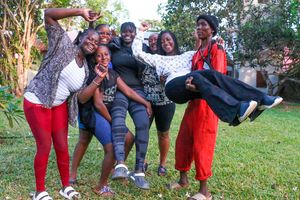Premium
Wajir officials raise alarm over spike in FGM cases

Wajir County Commissioner Jacob Narengo and Governor Mohamed Abdi during Mashujaa Day celebrations on Tuesday.
Administrators from northern Kenyan has expressed concern over the rising cases of female circumcision in Wajir County.
Wajir County Commissioner Jacob Narengo said on Tuesday that the closure of schools following the outbreak of Covid-19, has made many girls stay at home and be vulnerable to the cut.
According to a recent report released by Wajir County children department, at least 110 girls aged below 18 years have undergone the cut since June.
In his speech during the Madaka Day fete in the county, Mr Narengo warned circumcisers of consequences if found mutilating girls.
Mr Narengo further said that officials have identities of all the circumcisers in the county and are in possession of their names and their areas of operation.
"We know them by their sub-location and villages and we want to warn all those practicing FGM in Wajir County that their days are numbered," he said.
The administrator said the government will conduct public participation to find alternative ways for the circumcisers to earn their living.
Wajir County is one of the FGM hotspots in the country.
Mr Narengo said the government has an ambitious plan to end the practice in the country by 2022 adding that they will not relent in their fight against the vice.
According to the World Health Organization, FGM is mostly carried out on young girls be-tween infancy and adolescence and occasionally on adult women.
WHO estimates that every year, more than three million girls are at risk of being circumcised.
More than 200 million girls and women alive today have been subjected to the cut , according to data from 30 countries where population data exist.
The practice is mainly concentrated in the Western, Eastern, and North-Eastern regions of Africa, in some countries the Middle East and Asia, as well as among migrants from these areas.





